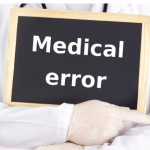Framing the Narrative
A major dilemma I noticed in this spreadsheet is that apologies are meant to be both forward-facing and rooted in the past. Apologies help us move on from difficult moments, especially when dealing with close relationships, like those with family members and colleagues. Depending on what is being apologized for, things can, of course, be awkward, to say the least, and apologies can help make these situations less awkward in the long run.
Inspecting the list of apologies, the best ones I received were able to bridge the past and the future appropriately. They described clearly what happened in the past and tied it to a commitment to the future. By contrast, the ones that left me feeling unsatisfied were those that seemed to engage in some historical revisionism to drive a self-serving point.
Takeaway #3: Apologies reflect latent power dynamics.
It’s become clear to me from this reflection that apologies are inherently linked to ideas of power and influence. The greater the power differential, the more necessary it is for the apology to reflect equity. People in positions of greater power have to be clearer in what they are apologizing for, and people who lack such power are in the unenviable position of balancing between asserting themselves and maintaining their own position.
Apologies have to take this into consideration. When people in power deliver apologies, they should acknowledge how their power led to a transgression and probe deeper into how systems enable these mistakes to occur. People in power also have to lean in more to communicate exactly how such errors or mistakes can be prevented in the future. Dedication to follow-up is important to maintain the credibility of the apology.
Apologies Are Bidirectional
Another aspect of apologies that became abundantly clear is that they are not only meant for the other, but really for oneself. It’s clear that physicians are encouraged to apologize carefully to protect their own medicolegal liability. But this is subverts what an apology is ideally meant to be—a meaningful connection to mend a relationship damaged by a particular action.
At the same time, to say an apology is purely altruistic is a little misleading. A sincere apology is an act of catharsis. It’s a way to promote self-forgiveness and to muster the self-discipline to improve oneself. It’s an attempt to mend a fraying (or frayed) relationship by forging newer bonds of mutual interest and empathy.



